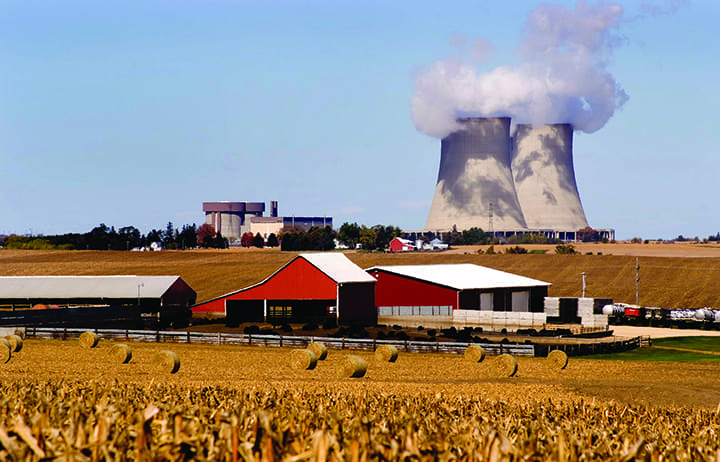The post Is Nuclear Power Poised for a Resurgence? appeared first on POWER Magazine.

Since 1990, nuclear power has consistently supplied about 19% to 20% of the electricity used in the U.S. However, very few nuclear plants have been added to the U.S. fleet over that time. Currently, the only new nuclear project in the U.S. is Southern Company’s Plant Vogtle expansion, which is expected to add two new reactors to the grid by the end of next year. Still, there are 50 reactors under construction around the world—12 of them in China—and several countries are considering adding more.
“There has been a fundamental shift in the thinking around the world. As climate change has become front and center as the number one issue globally—environmental issue and societal issue—the recognition that nuclear can and should play a part in helping us overcome the climate change problems has shifted a lot of thinking in governments that I talk to around the world, but also even with people that are environmental-minded—people that have been, in the past, anti-nuclear—and start seeing that nuclear now is and should be part of the solution. So, it’s a very exciting time,” George Borovas, head of Hunton Andrews Kurth’s nuclear practice and managing partner of the firm’s Tokyo office, said as a guest on The POWER Podcast.
In the future, Borovas said he expects China to continue building nuclear plants at least on the scale it is today, and perhaps at an even greater pace. “I think it’s going to be very easy for them to keep replicating, especially because they have such tremendous needs for energy,” he said. Nuclear power’s emissions-free aspect also provides a huge benefit for the Chinese, which has had air quality problems in a lot of its industrialized cities. “So, I do think that China is going to continue with its new build program very aggressively, and we’re starting to see also China becoming more of an exporting nation for nuclear technology and services around the world.”
Schedule delays and cost overruns have long been issues for the nuclear industry, but Borovas suggested some of those nagging problems could be remedied through repetition, especially now that first-of-a-kind units have been successfully commissioned. He noted that EPR and AP1000 units are operating in China, and effectively provide a template for future success.
Borovas was also optimistic about advanced technology, such as small modular reactors. “The small modular reactors—the SMRs—are very exciting,” he said. “You have some wonderful technologies that are designed to operate in a different environment. They have much more passive systems, they have walkaway safety scenarios, and they’re using technologies that have been around for a long time in a sense, but they’re packaging them in a way that makes more sense for the evolving world that we live in. I think they hold a lot of promise.”
Concerning the long-term future of nuclear power, Borovas said he believes there is a good opportunity for sustainable development. He suggested nuclear energy can help bring people out of poverty in places such as Africa, and its zero-carbon emissions provide a great alternative to fossil fuels. “I think nuclear has a very, very compelling and exciting story to tell, and the more people see that—the more people understand that—I think the more supporters of nuclear we’re going to have around the world,” he concluded.
To learn what Borovas thinks must be done to help economically struggling nuclear plants in the U.S. and other takes he has on the nuclear industry, listen to the full interview on The POWER Podcast. Follow the links below to subscribe via your favorite platform or click on the SoundCloud player to listen now:
For more power podcasts, visit The POWER Podcast archives.
—Aaron Larson is POWER’s executive editor (@AaronL_Power, @POWERmagazine).
The post Is Nuclear Power Poised for a Resurgence? appeared first on POWER Magazine.